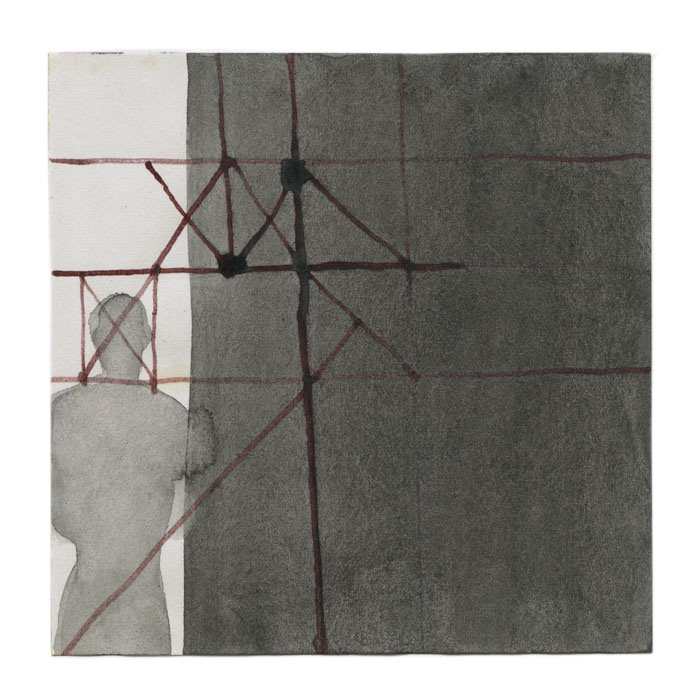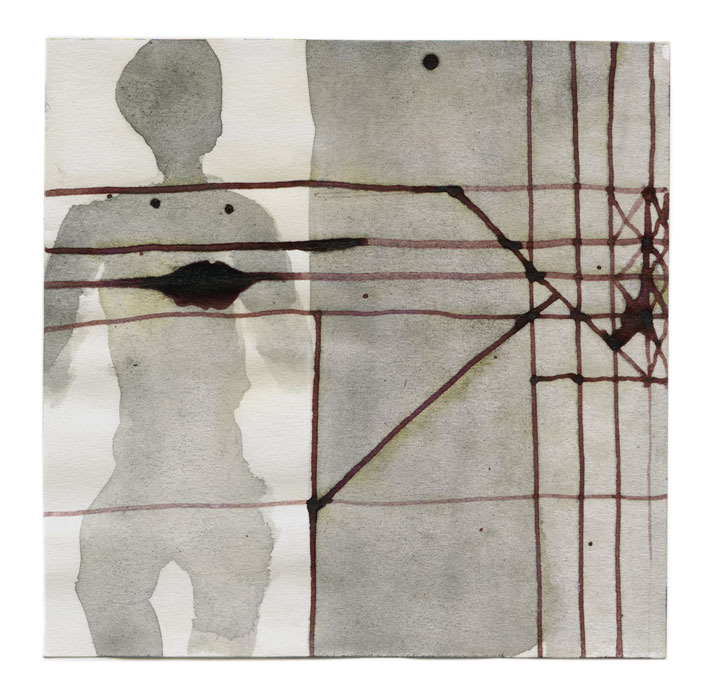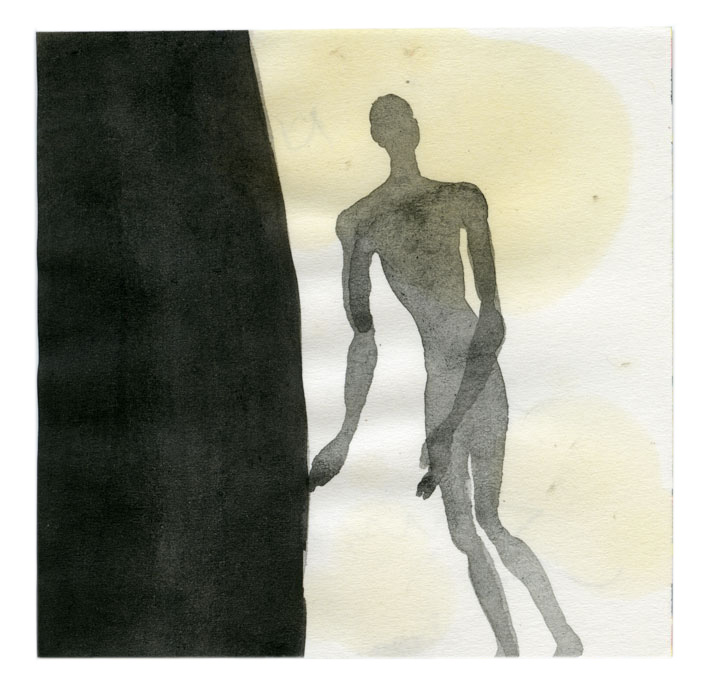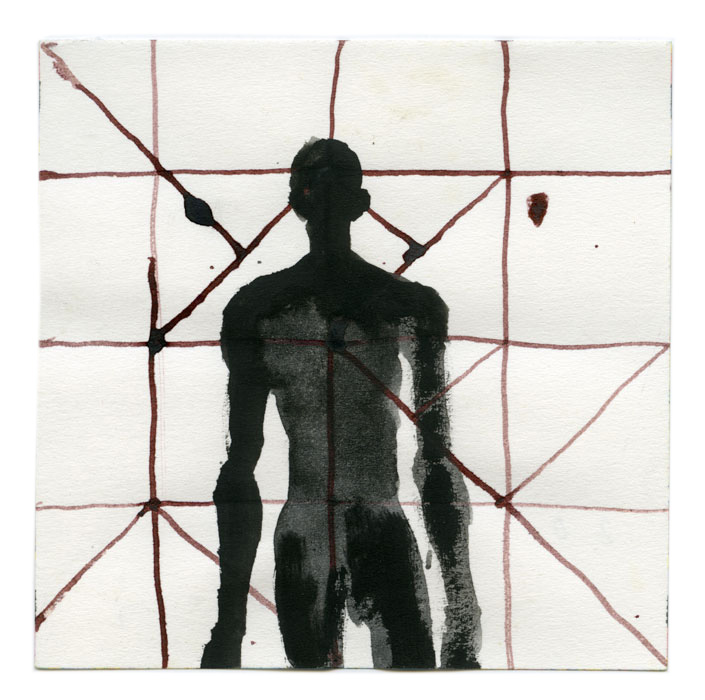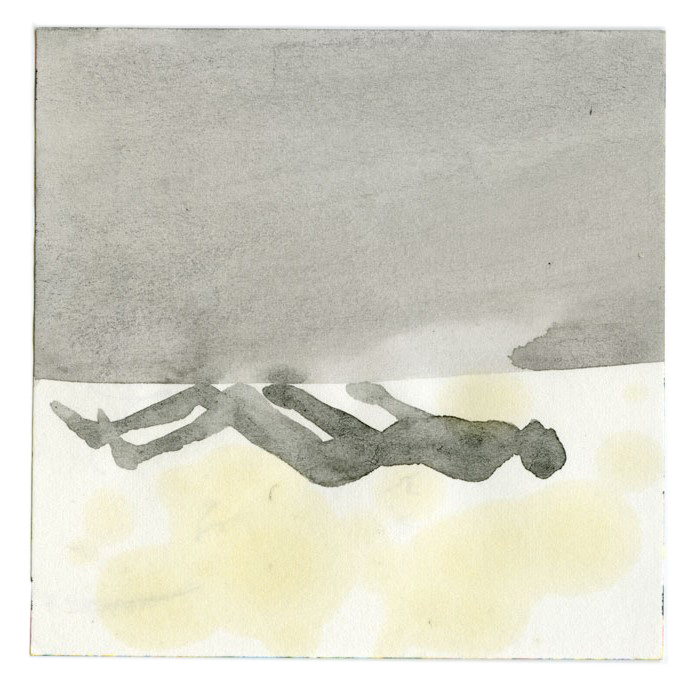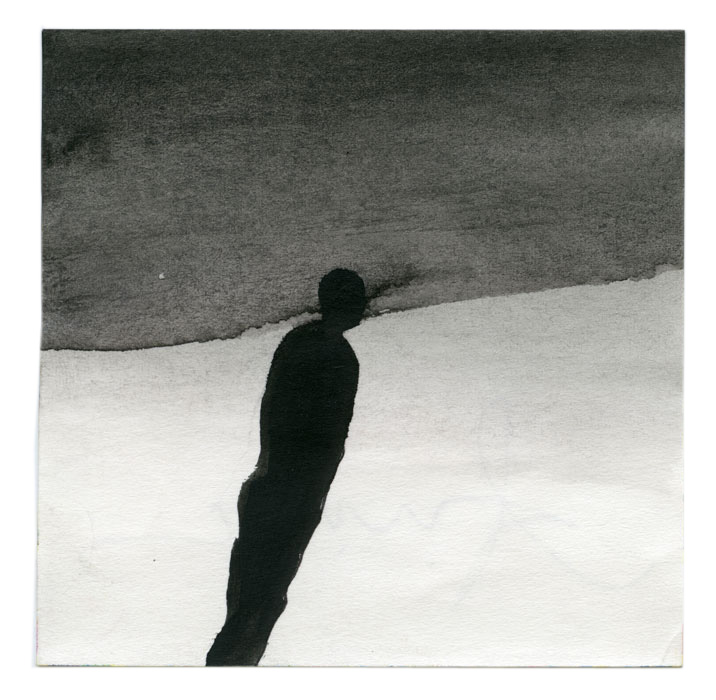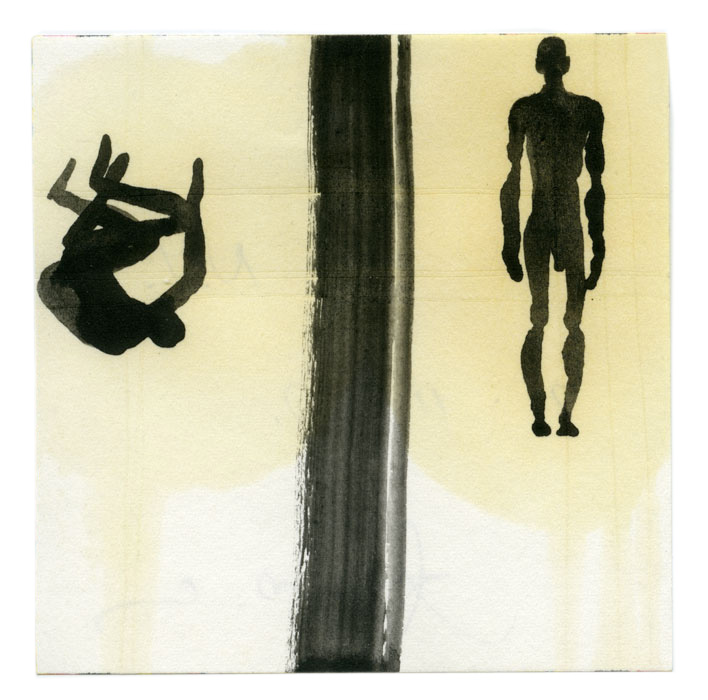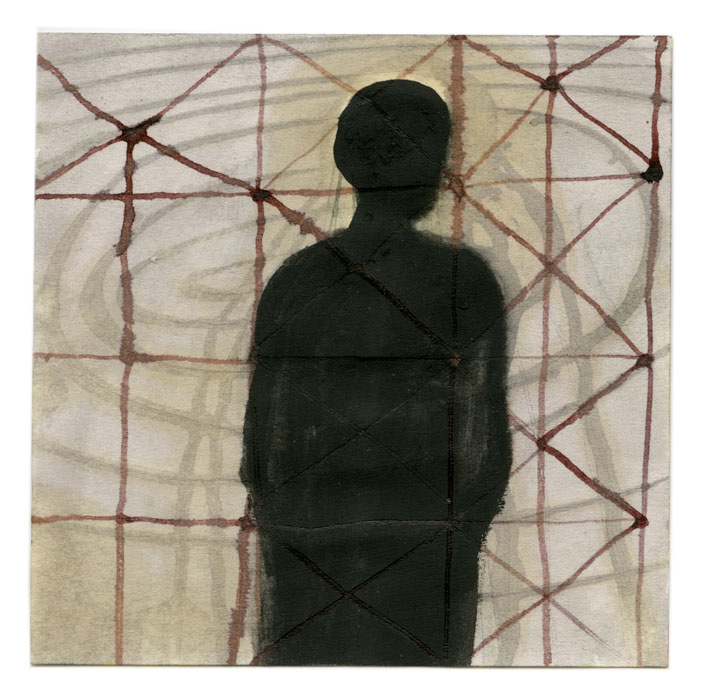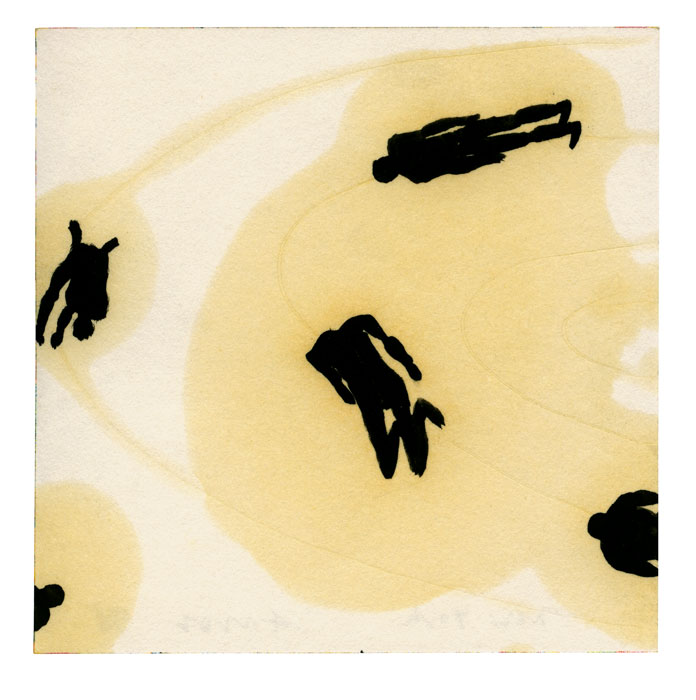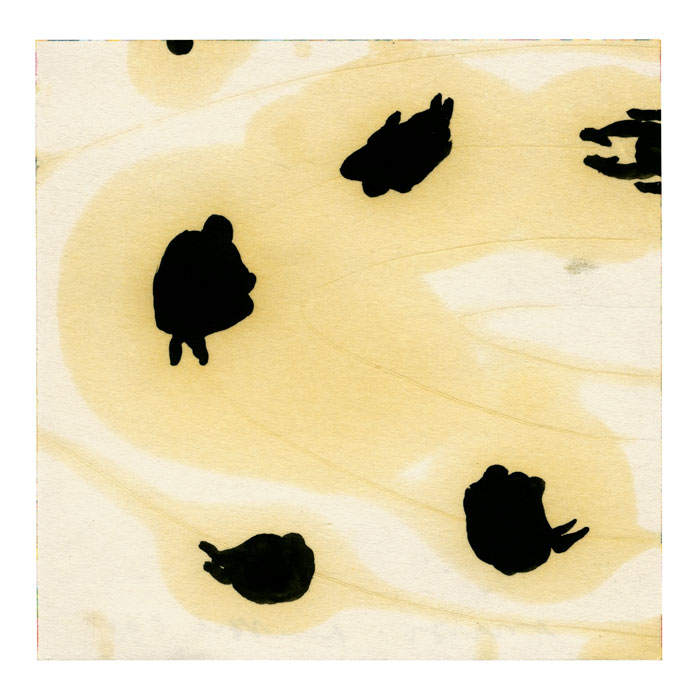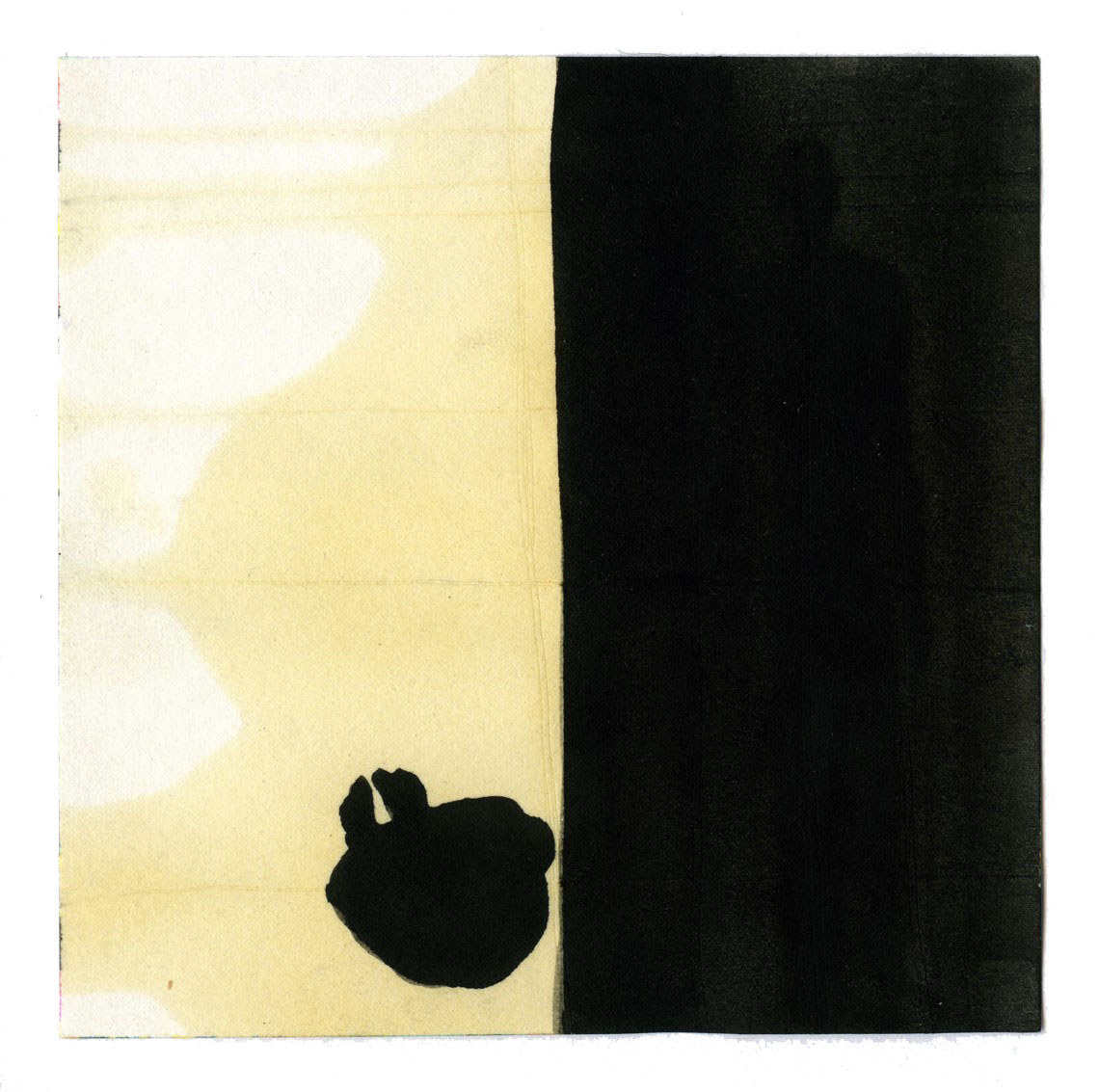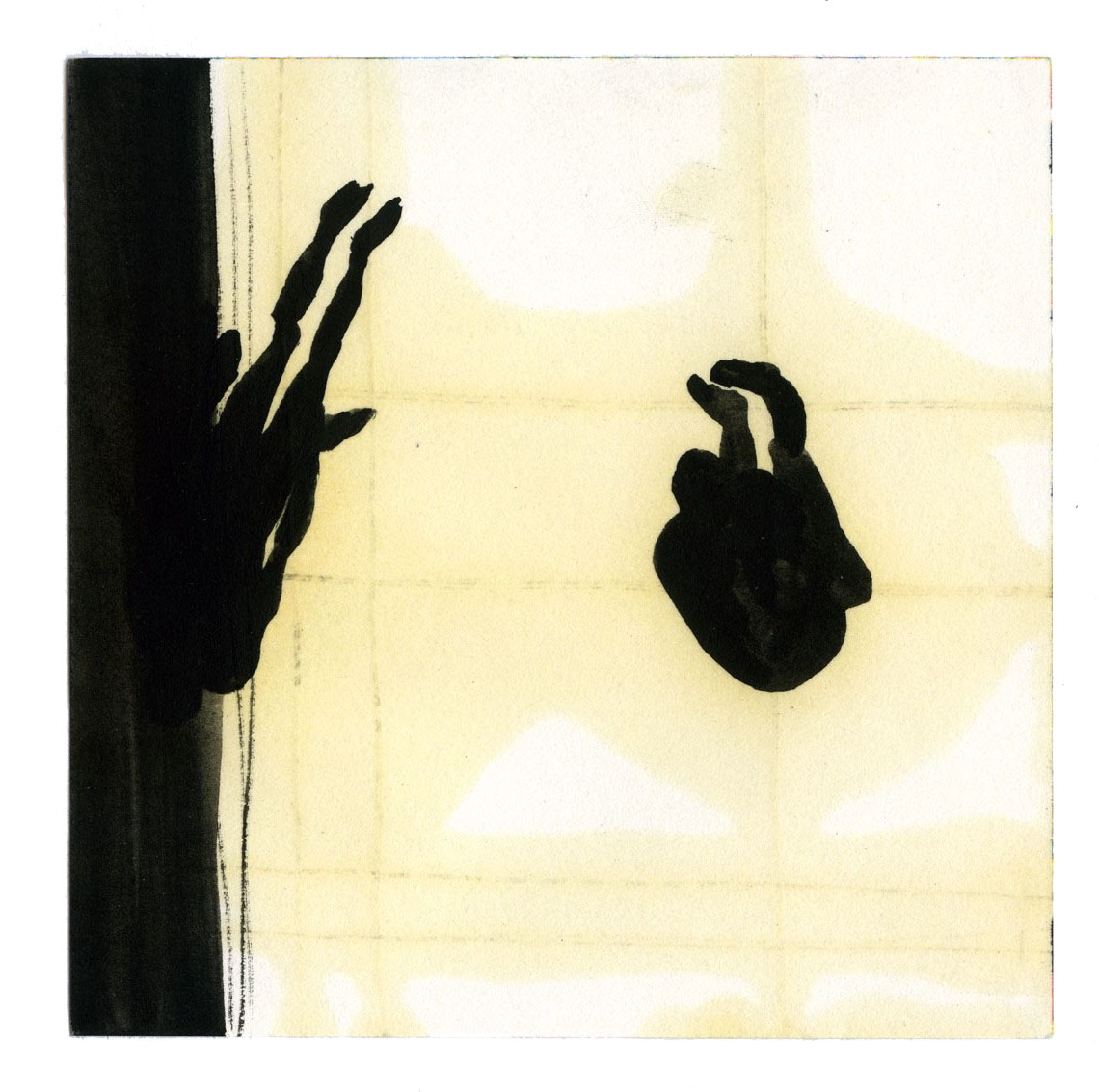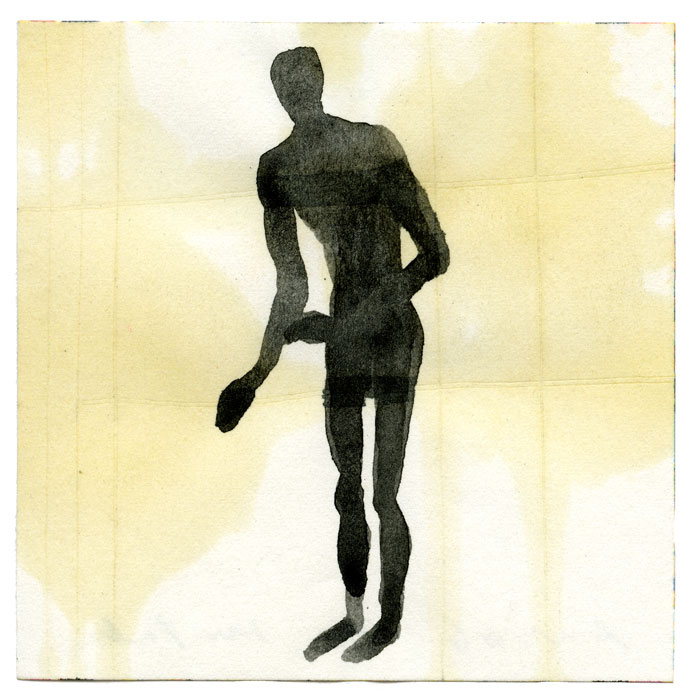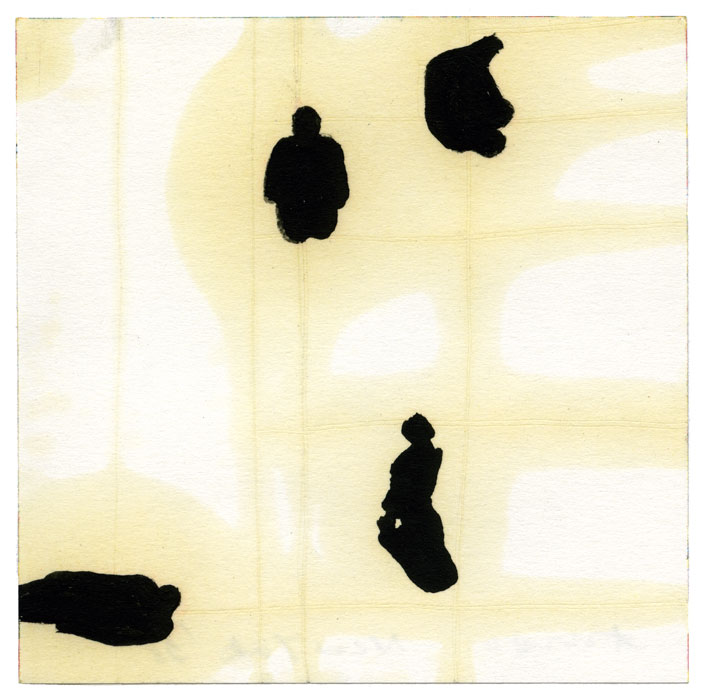'Increasingly [...] rather than connecting the body to the space of nature (as occurs in the BODY AND LIGHT series), [Gormley's] later drawings begin to demonstrate an interconnection with a more urban environment, which in turn affects their form. A couple of tiny works on paper from 1997, DAKOTA I and II, signal this change. Using the familiar materials of carbon and casein, the vestigial washed body silhouette now becomes over-inscribed by a series of brown lines which mark up an interrupted grid. Not only does this grid partially obscure the underlying figure (which now gradually appears to fade away in the watered pigment), it also creates a geometric pattern on the surface of the paper which, in its spatial composition, can be read as an architectural grille or balustrade set in front of a window, or as abstract scaffolding. Either way, it is not surprising to find that these urban works, with their rectilinearity operating at a far remove from the natural, curved forms of the Coniston drawings, were actually made in the Dakota Building on New York's West Side. The particular rhythm of the city's architecture seems to activate the composition of the grid and creates new possibilities for the interpenetration of body and space. Certainly the drawings appear to anticipate both the future concentration on the matrix itself in the GEOMETRY series and Gormley's wider interest in working on increasingly large scale urban architectural projects.'
Extract from Anna Moszynska, ANTONY GORMLEY: DRAWING SPACE, Milan: Electa, 2010, pp. 52-53

